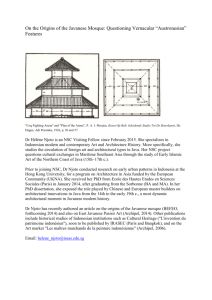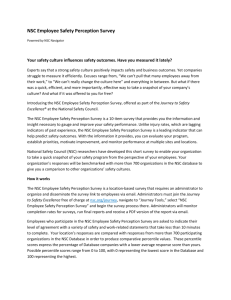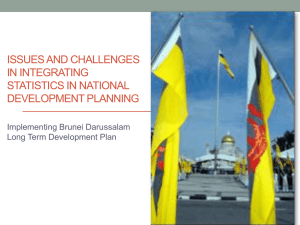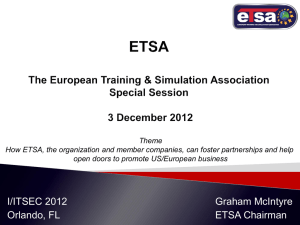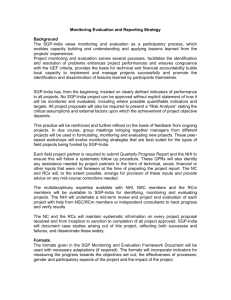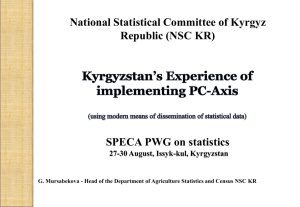International definition The adolescent birth rate measures the
advertisement
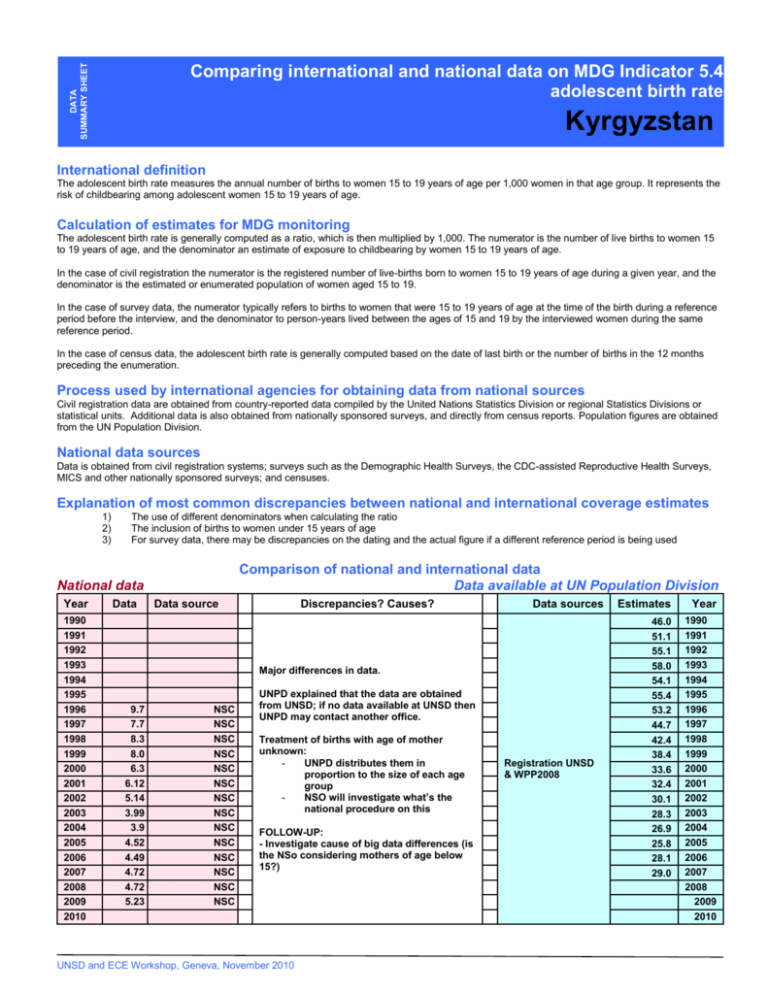
DATA SUMMARY SHEET Comparing international and national data on MDG Indicator 5.4 adolescent birth rate Kyrgyzstan International definition The adolescent birth rate measures the annual number of births to women 15 to 19 years of age per 1,000 women in that age group. It represents the risk of childbearing among adolescent women 15 to 19 years of age. Calculation of estimates for MDG monitoring The adolescent birth rate is generally computed as a ratio, which is then multiplied by 1,000. The numerator is the number of live births to women 15 to 19 years of age, and the denominator an estimate of exposure to childbearing by women 15 to 19 years of age. In the case of civil registration the numerator is the registered number of live-births born to women 15 to 19 years of age during a given year, and the denominator is the estimated or enumerated population of women aged 15 to 19. In the case of survey data, the numerator typically refers to births to women that were 15 to 19 years of age at the time of the birth during a reference period before the interview, and the denominator to person-years lived between the ages of 15 and 19 by the interviewed women during the same reference period. In the case of census data, the adolescent birth rate is generally computed based on the date of last birth or the number of births in the 12 months preceding the enumeration. Process used by international agencies for obtaining data from national sources Civil registration data are obtained from country-reported data compiled by the United Nations Statistics Division or regional Statistics Divisions or statistical units. Additional data is also obtained from nationally sponsored surveys, and directly from census reports. Population figures are obtained from the UN Population Division. National data sources Data is obtained from civil registration systems; surveys such as the Demographic Health Surveys, the CDC-assisted Reproductive Health Surveys, MICS and other nationally sponsored surveys; and censuses. Explanation of most common discrepancies between national and international coverage estimates 1) 2) 3) The use of different denominators when calculating the ratio The inclusion of births to women under 15 years of age For survey data, there may be discrepancies on the dating and the actual figure if a different reference period is being used Comparison of national and international data Data available at UN Population Division National data Year 1990 1991 1992 1993 1994 1995 1996 1997 1998 1999 2000 2001 2002 2003 2004 2005 2006 2007 2008 2009 2010 Data Data source Discrepancies? Causes? Data sources Major differences in data. 9.7 7.7 8.3 8.0 6.3 6.12 5.14 3.99 3.9 4.52 4.49 4.72 4.72 5.23 NSC NSC NSC NSC NSC NSC NSC NSC NSC NSC NSC NSC NSC NSC UNPD explained that the data are obtained from UNSD; if no data available at UNSD then UNPD may contact another office. Treatment of births with age of mother unknown: UNPD distributes them in proportion to the size of each age group NSO will investigate what’s the national procedure on this FOLLOW-UP: - Investigate cause of big data differences (is the NSo considering mothers of age below 15?) UNSD and ECE Workshop, Geneva, November 2010 Registration UNSD & WPP2008 Estimates Year 46.0 51.1 55.1 58.0 54.1 55.4 53.2 44.7 42.4 38.4 33.6 32.4 30.1 28.3 26.9 25.8 28.1 29.0 1990 1991 1992 1993 1994 1995 1996 1997 1998 1999 2000 2001 2002 2003 2004 2005 2006 2007 2008 2009 2010 National definition Other data on file at the UN Population Division but not taken into account for MDG monitoring Data source Reason for exclusion for MDG monitoring Data used at national level but not included in the MDG monitoring by the UN Population Division How to submit missing or new survey or census data for international monitoring to UN Population Division? Data from new nationally representative household surveys and censuses, as well as from nationally representative surveys not listed in this document can be send to: Ann Biddlecom, UN Population Division, e-mail: biddlecom@un.org . Remarks If there are any errors or omissions in this document, thank you for returning a corrected copy of this file by email to: biddlecom@un.org and martinho@un.org UNSD and ECE Workshop, Geneva, November 2010

